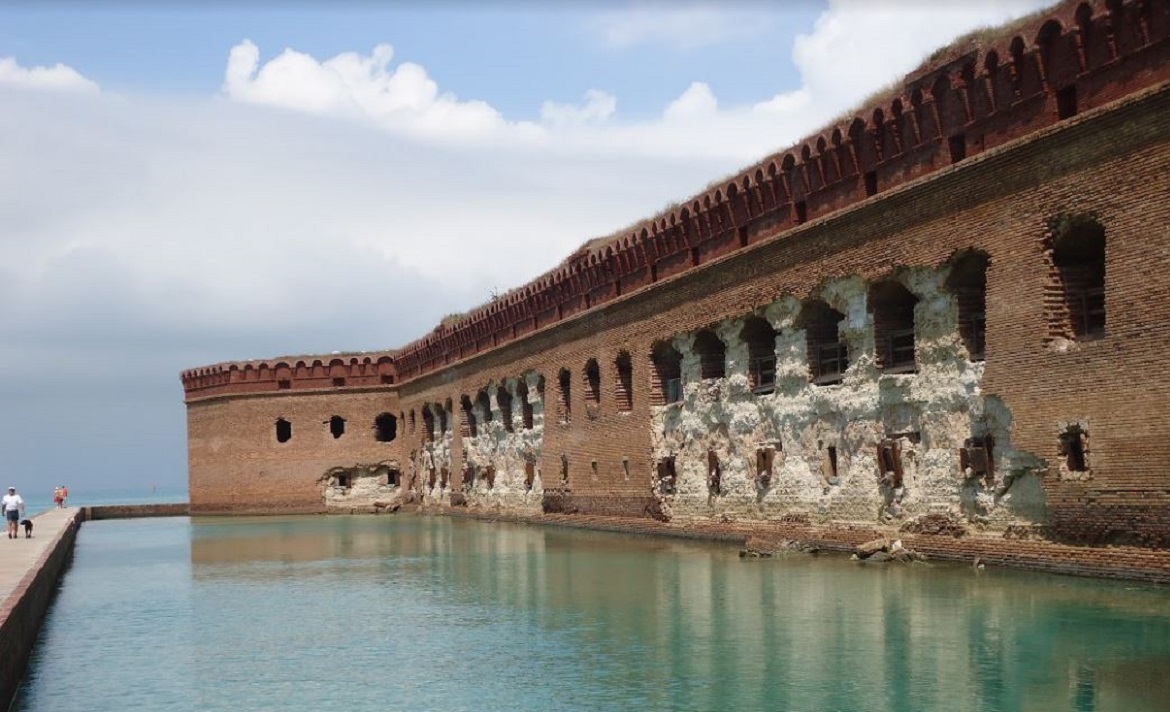News Release

NPS Photo/M. Rockman
News Release Date: January 6, 2017
Contact: Jeffrey Olson, 202-208-6843
WASHINGTON – The National Park Service (NPS) today released its strategy that connects cultural resources and climate change. The Cultural Resources Climate Change Strategy (CRCC Strategy) is a landmark statement for the NPS and its historic preservation and climate change partners about how to anticipate, plan for, and respond to the effects of climate change on cultural resources.
“Climate change is the biggest challenge the National Park Service has ever faced,” said National Park Service Acting Director Michael Reynolds. "Climate change poses an especially acute problem for managing cultural resources because they are unique. Our cultural resources are the things, the places and the ways of living that remember our past and shape our identity. Once lost, they are lost forever."
The NPS is the lead federal agency for protection and management of cultural resources. Given this role, the CRCC Strategy sets out a vision for cultural resources and climate change that is both broad and practical, and summarizes relevant approaches and case studies.
From the cliff dwellings of Mesa Verde to the steps of Ellis Island, the National Park System protects a suite of cultural resources—archeological sites, historic structures, museum collections—that provide valuable insight into the experiences of past generations. Additionally, parks support the traditions and lifeways of many indigenous cultures. The collective record preserved within parks of the National Park System and in the heritage managed by partners provides important evidence about how past generations fared during earlier instances of global change.
Today, rising sea levels and storm surge threaten some coastal fortifications, historic cemeteries, and prehistoric shell middens like those at Everglades National Park. In the American West, changing precipitation patterns have resulted in flooding in important landscapes and increased stress on historic buildings, including adobe structures at Tumacacori National Historical Park. And in higher latitudes, delicate tools of wood and bone are exposed to air and rapid decay as snow and ice fields melt in places like Gates of the Arctic National Park and Preserve.
Specifically, the CRCC Strategy connects cultural resources to the four pillars of climate change response identified in the CRCC Climate Change Response Strategy released in 2010: science, adaptation, mitigation, and communication. Approaches and methods from other CRCC guidance documents, tools and supporting information, and many park- and partner-based case studies are incorporated throughout.
The NPS Strategy presents four major goals:
1. Connect Impacts and Information: managing cultural resources under climate change requires assessing effects of climate change on cultural resources and engaging with the stories and meaning that cultural resources hold about long-term human interactions with our environment
2. Understand the Scope: additional work is needed to understand the range and thresholds of climate change impacts on cultural resources
3. Integrate Practice: climate data and related information and approaches (such as scenario planning) should be adapted for the specific needs of cultural resources, and ongoing cultural resources management should incorporate climate data and related information and approaches
4. Learn and Share: NPS has unique approaches to share, and collaboration with partners nationally and internationally is essential to meet the urgent threats of climate change and preserve global human heritage
The CRCC Strategy addresses overarching issues faced by the NPS. It is also organized so that it is relevant and useful to federal, state, tribal, and other historic preservation and climate change response partners. Its content draws from CRCC climate workshops, reports, projects, technical assistance requests, and community of practice discussions from 2011-2016. It was refined through two rounds of peer review.
About the National Park Service. More than 20,000 National Park Service employees care for America's 413 national parks and work with communities across the nation to help preserve local history and create close-to-home recreational opportunities. Visit us at www.nps.gov, on Facebook www.facebook.com/nationalparkservice, Twitter www.twitter.com/natlparkservice, and YouTube www.youtube.com/nationalparkservice.
Last updated: January 12, 2017
